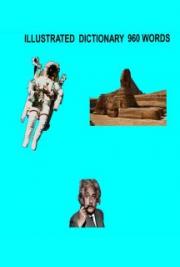97
Using Technology to Study Cellular and Molecular Biology
In Advance
Web-Based Activities
Activity
Web Version
1
No
2
No
Photocopies
Activity 1
• Master 4.1, Microscopes Across Time, 1 transparency
• Master 4.2, Some Key Developments in Biology, Medicine,
and Technology, 1 transparency
Activity 2
none required
Materials
Activity 1 • 24 sheets of white copying paper
• black marker
• blank transparency; or a string as long as the width of
classroom, 29 paper clips, and 5 sheets of white copying
paper
Activity 2
none required
Preparation
Activity 1
On each of 24 sheets of white paper, use the black marker to write one
of the key developments listed on Master 4.2, Some Key Developments in
Biology, Medicine, and Technology (eight developments are listed in each
of three categories: biology, medicine, and technology). Do not provide
the year of the development or the name(s) of the individual(s) involved.
There are two options for this activity: use a blank transparency to record
student responses as they construct the timeline for developments in
biology, medicine, and technology, or stretch the string across the width
of the classroom and affix it well at both ends. If you choose the second
option, write one of the following on each of five sheets of white paper:
1600, 1700, 1800, 1900, or 2000. Use a paper clip to attach the sheet
indicating 1600 at the near the left end of the string. Attach the sheet
indicating 2000 near the right end of the string. Attach the remaining
sheets with 1700, 1800, and 1900 in order between 1600 and 2000.
Activity 2
No preparations needed.
98

Activity 1: Time Travel
Procedure
1.
Show students the transparency of Master 4.1, Microscopes Across
Time. Ask them to look at the pictures of the microscopes and
describe the differences they observe.
Write student responses on the board. The pictures present micro-
scopes developed over approximately 250 years. Students can
respond to differences in design, such as the development of mul-
tiple objective lenses. Some students may respond with differences
that are implied, such as better optics, electrical components, and
computerized components. The objective of this question is to
engage student thinking about the changing face of science and
technology across time.
2.
Ask the class to imagine that they are scientists or physicians
living in the mid-1800s. How much progress do they think they
would make solving the problems in Lesson 3?
For example, could they have identified the infectious agent?
Could they have determined how the disease was caused? Students
will probably have little specific knowledge of when relevant dis-
coveries were made or when relevant technologies were developed.
Allow the students to wonder about the timeline of scientific dis-
covery. Even though the problems in Lesson 3 are the same as in
any time period, the technologies and knowledge available at a
given time will determine the extent to which the problems can be
solved.
3.
Divide the class into three groups.
One group will focus on biology, the second on medicine, and the
third on technology.
4.
Provide each student in the biology group with one sheet on
which a biology development is written. Provide each member of
the medicine and technology groups with one sheet on which a
Content Standard E:
development appropriate to their group is written.
Science often
advances with new
In classes with fewer than 24 students, you can give students more
technologies.
than one sheet or you can give the group all eight sheets. In classes
with more than 24 students, you can add the following develop-
ments:
• biology: covalent bond described (1916, Gilbert Lewis), gene-
sequencing methods developed (1977, Walter Gilbert and Allan
Maxam, and Fred Sanger and Alan Coulson);
99
Student Lesson 4
Using Technology to Study Cellular and Molecular Biology
• medicine: first vaccination (1796, Edward Jenner), aspi-
rin introduced (1899, Felix Hoffmann);
• technology: protocol allowing different computer net-
works to interconnect and communicate with each
other (1973, Vinton Cerf and Bob Kahn), automated
DNA sequencer introduced (1986, Leroy Hood and col-
leagues).
Other developments can be added at the teacher’s discretion.
5.
Ask students to estimate the year the development on their
sheet occurred.
6.
Ask students to consult with other group members to place
all developments in their category in chronological order.
Allow only a few minutes for students to do this.
7.
Have students report their results.
This can be accomplished two ways. Students can call out
their results to the teacher, who then records the informa-
tion along a line drawn on a blank transparency projected for
the class to see. Alternatively, students can clip their sheets
to the string that spans the width of the room. Sheets should
be placed at a location representing the approximate date of
each development. For instance, a development occurring in
1850 would be placed midway between 1800 and 1900.
8.
Show students a transparency of Master 4.2, Some Key
Developments in Biology, Medicine, and Technology, and
quickly evaluate how students did at constructing their
timeline.
9.
Looking at the timeline, ask students what progress they
could have made in solving the problems in Lesson 3 if
they were working in the mid-1800s.
Students see that technologies available in 1850 were not
capable of providing the information required to solve the
problems in Lesson 3. Students also develop a firmer under-
standing of the relationship between technology development
and the advancement of knowledge.
Activity 2: Is That All There Is?
Teacher note: This activity should follow Activity 1 without a
break in discussion.
100


1.
Ask students if our present technology toolbox is complete. With
a show of hands, how many students believe we need new tech-
nologies?
You might ask students to suggest some new technologies and write
these suggestions on the board. Student responses are less impor-
Content Standard E:
tant than shifting the focus from existing technologies to new ones
Many scientific investi-
(or refinements of existing ones).
gations require contri-
butions from different
2.
Tell students that they will accelerate their journey through time.
disciplines, including
They are now scientists in the year 2052. Since students know
engineering.
that technologies are generally developed by teams whose mem-
bers have expertise in more than one discipline, they now will
Content Standard E:
work in teams.
Creativity, imagination,
and a good knowledge
3.
Divide the class into groups of four or five. Ask each group to
base are all required
choose one of the following problems:
in the work of science
• development of a technology to detect and measure concen-
and engineering.
trations of the abnormal protein in affected people from Les-
son 3 (that is, a biosensor),
• development of a technology to determine the structure of a
protein molecule without having to prepare a crystal of the
protein, or
• development of a technology that allows molecules of a drug
to be delivered specifically to the protein of affected people
from Lesson 3 in a way that allows the physician or scientist
to know how much drug is delivered.
4.
Instruct students to work with their group members to outline
the requirements of their technology.
This is a challenging activity for students. However, the key issue is
the rationale students provide for their technology. Students should
consider at least the following:
Content Standard G:
• What disciplines are involved in developing the technology?
Scientific explanations
• Is it a new technology or a refinement of an existing technology?
must meet certain
• What is the level of resolution required?
criteria such as consis-
• How are the issues of scale and probe size dealt with?
tency and accuracy.
• In general terms, how does the technology work?
5.
Reconvene the class. Each group in turn should present its tech-
nology.
Use class discussion to discover problems and weaknesses and to
help group members refine their ideas.
101
Student Lesson 4
Using Technology to Study Cellular and Molecular Biology
6.
As a final means of assessment, ask each student to prepare a
written report describing his or her technology.
Technologies should be described in sufficient detail to indicate the
student’s understanding of the concepts presented in this module.
102
Activity
Lesson 4 Organizer
Activity 1: Time Travel
What the Teacher Does
Procedure Reference
Show students a transparency of Master 4.1, Microscopes Across Page 99
Time. Ask them to look at the microscopes and describe the dif-
Step 1
ferences they observe.
Ask the class to imagine that they are scientists or physicians
Page 99
living in the mid-1800s. How much progress do they think they
Step 2
would make solving the problems in Lesson 3?
Divide the class into three groups.
Pages 99–100
• One group will focus on biology, the second on medi-
Steps 3–7
cine, and the third on technology.
• Provide each student with a sheet of paper on which is
written one development in his or her focus area.
• Ask students to estimate the year the development on
their sheet occurred.
• Ask students to consult with other group members to
place all developments in their focus area in chronologi-
cal order.
• Have students report their results.
Show students a transparency of Master 4.2, S ome Key Develop- Page 100
ments in Biology.
Steps 8–9
• Evaluate how students did at constructing their timeline.
• Ask students what progress they could have made in
solving the problems in Lesson 3 if they were working in
the mid-1800s.
Activity 2: Is That All There Is?
Ask students,
Page 101
• “Is our present technology toolbox complete?”
Step 1
• “How many students believe we need new technologies?”
103
Student Lesson 4
Using Technology to Study Cellular and Molecular Biology
Divide the class into groups of four or five.
Page 101
• Tell students they are scientists in the year 2052.
Steps 2–4
• Ask each group to choose one of the following prob-
lems:
o development of a technology to detect and mea-
sure concentrations of the abnormal protein in
affected people from Lesson 3;
o development of a technology to determine the
structure of a protein molecule without having to
prepare a crystal of the protein; or
o development of a technology that allows mol-
ecules of a drug to be delivered specifically to
the protein of affected people from Lesson 3 in a
way that allows the physician or scientist to know
how much drug is delivered.
• Instruct students to work with their group members to
outline the requirements of their technology, focusing on
concepts learned in earlier lessons.
Reconvene the class and allow each group to present its
Page 101
technology.
Step 5
As a final assessment, ask each student to prepare a written
Page 102
report describing his or her technology.
Step 6
= Involves using a transparency.
104
Lesson 1
Engage
title
Masters
Lesson 1, What Is Technology?
At a Glance
Master 1.1, Searching for Scale
1
copy
per
student
Lesson 2, Resolving Issues
Master 2.1, Probing for Answers Score Sheet
1
copy
per
2
students,
1
transparency
Master 2.2, Probes
1
copy
per
12
students
Masters 2.3 to 2.8, Probing for Answers—Levels 1–6
1 copy of each per 12
or
fewer
students;
2
copies
of
each
for
13–24
students;
3
copies
of
each
for
25–36
students
Master 2.9, Solution to Probing for Answers
1
transparency
( print version only)
Lesson 3, Putting Technology to Work
Master 3.1, Memo from the Director, Global Science
and Health Organization
1
copy
per
group
Master 3.2, Research Plan
1
copy
per
student,
1
transparency
Master 3.3, Example of a Research Plan 1
transparency
Master 3.4, Drug Discovery Evaluation Form
1
copy
per
student
( Web version only)
Master 3.5, Available Technologies
1
transparency
( print version only)
Master 3.6, Science Reference Manual
1
copy
per
group
( print version only)
Master 3.7, Muscle Protein Structures Determined by
X-Ray Crystallography
1
copy
per
group
or
1
transparency
( print version only)
Lesson 4, Technology: How Much Is Enough?
Master 4.1, Microscopes Across Time
1
transparency
Master 4.2, Some Key Developments in Biology,
Medicine, and Technology
1
transparency
105
Searching for Scale
Name:
Date:
Biological
Actual
Size Relative to Cell Object Used to
Measured
Size Relative
Structure
Diameter
Model Biologi-
Size of
to Model Cell
(in Meters)
cal structure
Model Object
(the Room)
Cell
1 × 10–5
1 × 10–5
Room
10 meters
10
= 1
= 1
1 × 10–5
10
Bacterium
1 × 10–6
1 × 10–6
Desk
1 meter
= 1
1 = 1
1 × 10–5 10
10 10
Mitochondrion
5 × 10–7
5 × 10–7 = 1
1 × 10–5 20
Virus
1 × 10–7
Ribosome
1 × 10–8
Protein
5 × 10–9
Glucose
1 × 10–9
molecule
H2O molecule
1 × 10–10
Master 1.1
Probing for Answers Score Sheet
A
B
C
D
E
F
G
H
I
1
2
3
4
5
6
7
8
9
Master 2.1
Probes
Master 2.2
Probing for Answers—Level 1
A
B
C
D
E
F
G
H
I
1
2
3
4
5
6
7
8
9
Level 1
Master 2.3
Probing for Answers—Level 2
A
B
C
D
E
F
G
H
I
1
2
3
4
5










